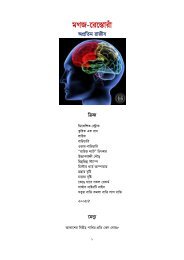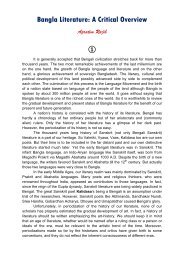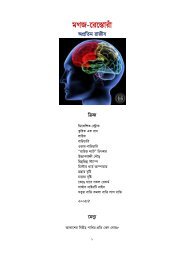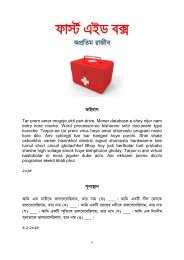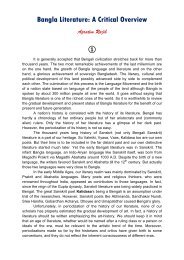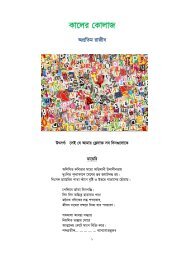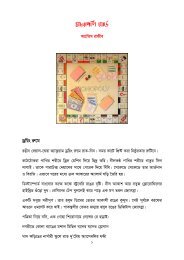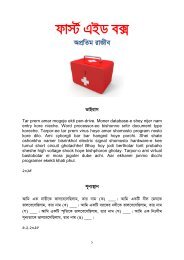Literature-Critique
Create successful ePaper yourself
Turn your PDF publications into a flip-book with our unique Google optimized e-Paper software.
3<br />
By that time, Buddhism was in the way of transition from its stoic feature to an<br />
epicurean one. Thus sexuality, which was discouraged by its early preachers,<br />
became in course of time, an auspicious part of its ritual.<br />
The Buddha was then accepted even by the Hindus as their avatar. Its proof<br />
is the 12 th -century Sanskrit poet Jayadeva’s work Gitogobindam. Acclaimed as the<br />
epic of Vaishnavism, this poem possesses a psalm on the Buddha. Now some critics<br />
even claim this poem to belong to the Vajrayan school of Buddhism.<br />
In 1907, Dr. Haraprasad Shastri (1853-1931) discovered a Banga-Kamrupiya<br />
(i.e. the earliest form of Bangla and Assamese) script in Nepal’s Royal archive and<br />
published entitling Charya-Charya-Binischay. It is in fact, an anthology of Buddhist<br />
Sahajiya mystic (Charya) songs. However, this poetic collection is claimed by at<br />
least six languages – Bangla, Assamese, Oriya, Maithili, Hindi and Manipuri.<br />
Charya-Charya-Binischay includes the songs of Lui Pada, Kanho Pada, Sabar<br />
Pada, Kukkuri Pada, Dhendon Pada, Vusuku Pada, Shoroho Pada and many others.<br />
Through this work, Bangla literature was born and started to walk in its long-destined<br />
way. A masterpiece of the era, it is in fact the progenitor of our dear mother-tongue.<br />
The poets of Charyas depicted the lives of lower class and ‘untouchable’<br />
people (like boatmen, potters, hunters etc.) in the surface. But they in fact reveal<br />
spiritual ideas supported by Sahajiya Tantric Buddhism.<br />
The Tantric Buddhists relied on sexual practice as a part of their religiosity;<br />
their notion of sex too is evident in this book. Later this cult developed into<br />
Vaishnava Sahajiya, Nath and Baul mysticisms; so the subsequent Bengali culture<br />
bore their inheritance.<br />
There are some beautiful imageries in the anthology, for example –<br />
“High mountain, there lives the hunter girl,<br />
Peacock feathers are her attire, a Gunja-garland is around her neck.”<br />
(Translated by the author)<br />
The following lines refer to those days’ poverty-stricken people’s lives –<br />
“My home is on a small hill, I have no neighbor,<br />
No rice is there in my pitcher, starvation lasts forever.”<br />
(Translated by the author)<br />
Dak, Khana’s Bachans (i.e. utterances) and a huge number of fairy tales too<br />
are believed by some scholars to belong to this era. Khana was a legendary<br />
astrologer who gave rhymed counsels to the common public.<br />
Atish Dipankar Srijman (982?-1053), the most renowned scholar of the age,<br />
is believed to have written Charya songs in Banga-Kamrupiya. Unfortunately only the<br />
Tibetan translations of his works survive.<br />
Some scholars imagine that some writings of ‘Nath’ literature (which really can<br />
be traced since the 17 th century) might have been done in the Buddhist era. But not<br />
a single piece of writing of that genre has been discovered yet.<br />
In this context, it is noteworthy that the languages of the whole Eastern India<br />
(including Bengal, Kamrupa, Maghad and Kalinga) were closely similar in those<br />
days. So it was an age of the entire Eastern Indian literature.




